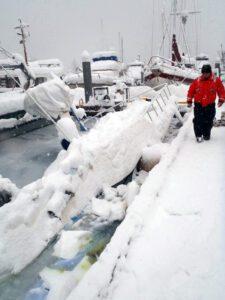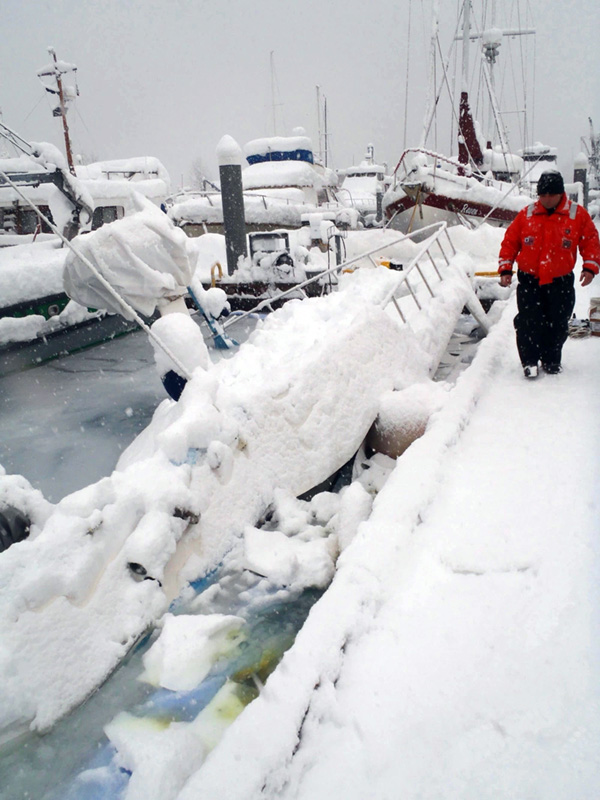
U.S. Coast Guard officials in Alaska are reminding boaters to be mindful of safety during the cold season and to regularly clear out any snow and ice building up on their moored vessels. Too much ice and snow buildup could lessen a vessel’s stability and could lead it to sinking and cause property damage and pollution, according to the agency.
While out on the water, boaters should always don a life jacket and other proper personal protective equipment. They “can drastically improve the chances of survival if a boater ends up in the water,” the USCG said.
“Perform routine vessel checks and verify that your contact information is up to date with your harbor or marina,” said Michael Folkerts, a boating safety specialist for the 17th Coast Guard District. “Ice and snow can clog cockpit drains causing additional weight loads that can push the waterline over scuppers and through hulls. A common cause of harbor sinkings are frozen and then cracked hulls, and failed fittings. Winter conditions can be rough on boats, and even rougher on boaters who end up in the water. We can’t stress enough how dangerous and unforgiving Alaskan waters can be this time of year.”
Vessel owners should alert their area harbormaster if they are unable to monitor their vessel’s condition, the USCG said.

